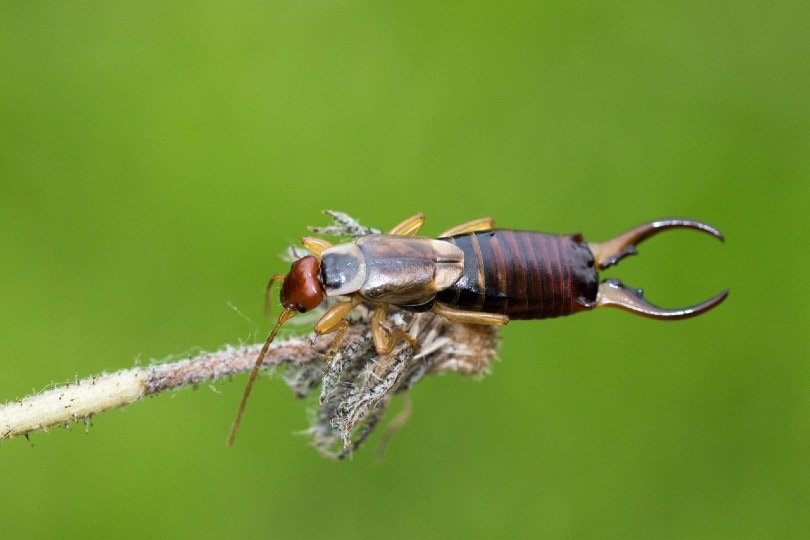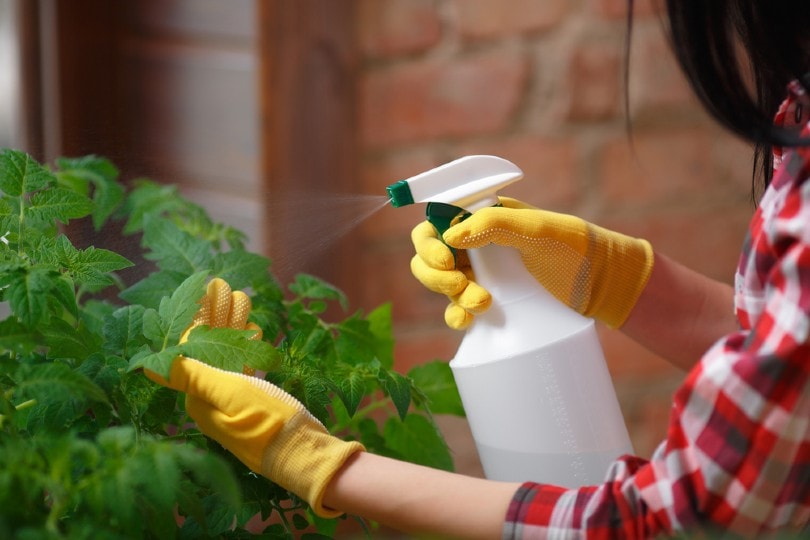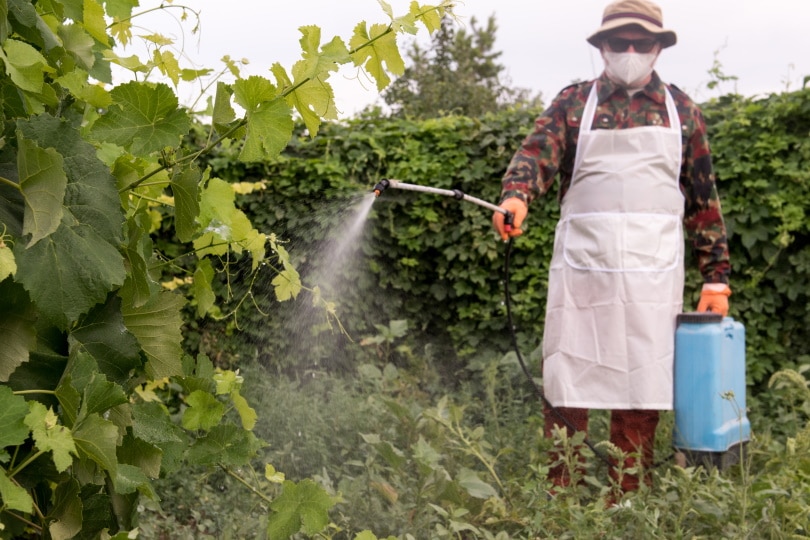How to Get Rid of Earwigs in Your Yard & Garden: 7 Methods That Work
-
Codee Chessher
- Last updated:

Earwigs, also called pincher bugs, are one of many nuisances that can afflict homeowners and gardeners. They don’t usually bite or sting humans, but they’ll destroy your plants if given the chance! They feast on decaying wood and foliage alike, but they’re not unstoppable. In fact, there are numerous ways you can get rid of earwigs and keep them gone for good. Let’s find out how.
The 7 Methods to Get Rid of Earwigs in Your Yard & Garden
1. Spray Them With Dish Soap or Rubbing Alcohol & Water
If you don’t want to use harsh, toxic pesticides, dish soap is the next best thing. Mix a few drops of dish soap in a spray bottle, mix it with water, and spray the solution any time you see earwigs outside or near your plants. Mix together rubbing alcohol and water in a 1:1 ratio for a more lethal mixture that can easily penetrate the earwig’s thick shell.

2. Kill & Deter Them With Boric Acid
Sometimes called Borax, boric acid is a natural insecticide that kills earwigs and other insects on contact. Sprinkle this around the edges of your home, garden, and in damp areas with wood around your yard. Be careful to use it sparingly if you have pets or children, as it can be toxic to them if ingested or inhaled.
3. Make Earwig Traps
Mix water and dish soap in a large bowl until it’s foaming and leave it outside with a light shining on the bowl. Earwigs and other insects will be drawn to the light and get trapped in the soapy water, where they’ll eventually die. You can check the trap the day after to see how many bugs you were able to trap, making these very useful and affordable ways to combat earwigs.
Alternatively, you can mix soy sauce and vegetable oil together in a cup with a lid. Poke holes in the top and leave it outdoors to attract earwigs that will be drawn to the smell and drown in the mixture.
4. Attract Predators
Birds are the main predator of earwigs and other garden pests, so attracting them will naturally kill the earwigs in your yard and repel them in the future. Adding bird baths, feeders, and berry bushes are some of the best ways to attract birds to your garden. This isn’t a foolproof method by any means, but it can be helpful when combined with other methods of extermination and deterrence.
5. Go Nuclear With Pesticides
Earwigs can be pernicious, so you may want to invest in a granular earwig pesticide. These are sprinkled onto your lawn and garden and watered so that they seep into the ground. Earwigs lay their eggs in the soil, so this method will kill earwigs and their eggs in one fell swoop. If you’ve found no success with the other methods or don’t mind using pesticides, this is one of the most effective ways to get rid of earwigs.

6. Keep Them Out of the House
Seal all small cracks in your walls and window screens to prevent earwigs from getting into your home from the yard. To remove potential sources of water, have any leaky faucets or taps fixed. Earwigs, like other bugs, can’t live without water and will avoid the area if there’s no water to sustain their numbers. Dehumidifiers help too because earwigs like damp conditions.
7. Use Yellow Lighting Outdoors
Replace your outdoor ultra-bright bulbs with yellow sodium bulbs to instantly reduce insects nearby. White lights emit blue wavelengths that attract earwigs and other bugs, while sodium lights emit a different kind of light that bugs aren’t attracted to. This is more of a deterrent than a solution, but they’re great for keeping bugs away after you kill them.
Conclusion
Earwigs aren’t harmful to people, but they can be a real menace to your lawn and garden. For the best results, use an extermination method along with one or two deterrents to prevent the bugs from moving back onto your property.
- See also: 10 Safest Cities in Ohio (with Pictures)
Featured Image Credit: MelaniMarfeld, Pixabay
Contents
